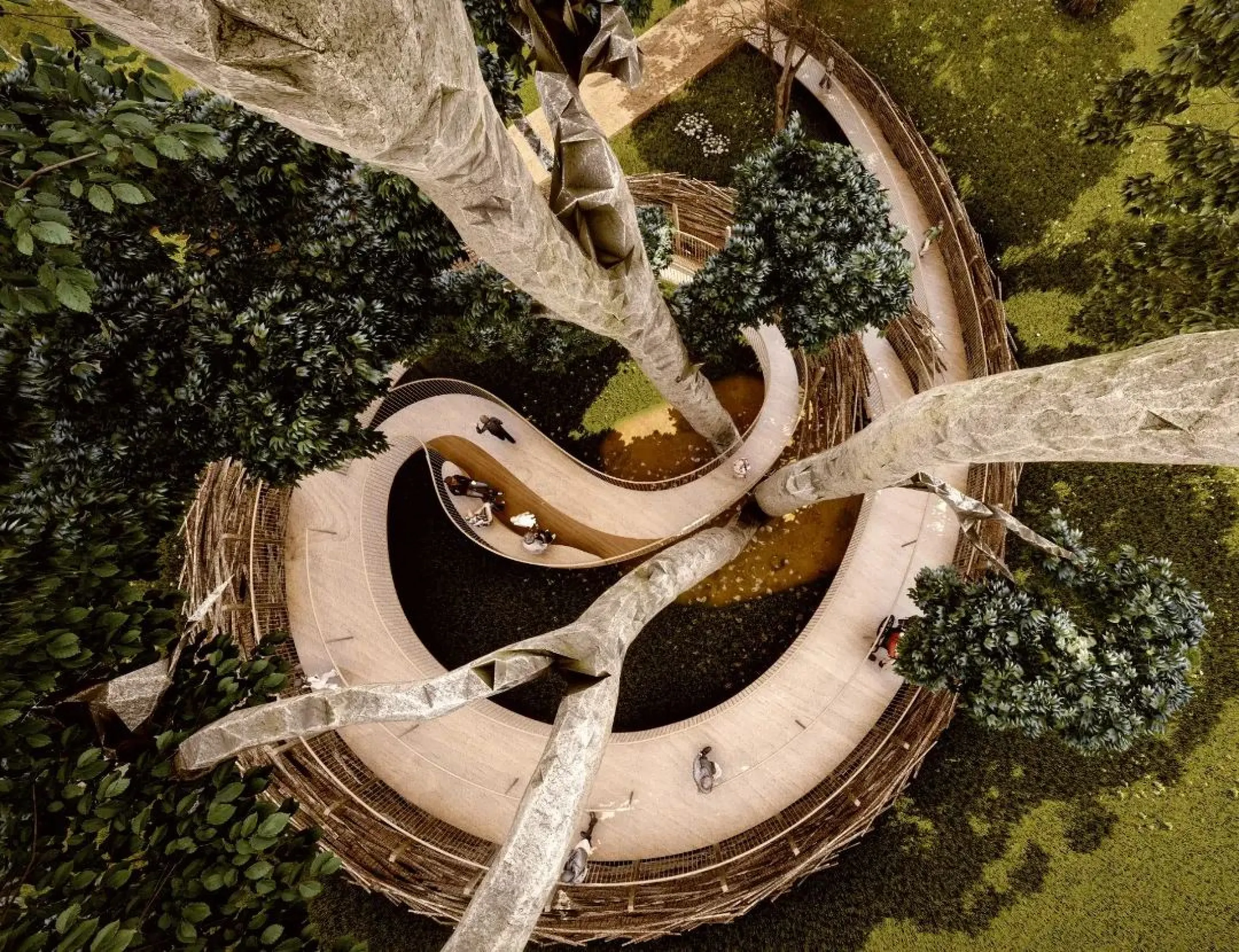Biophilic cities: the case for urban treehouses
Treehouses commonly recall adventurous play stories and childhood memories. Yet the concept and the experience of a treehouse suits adult life as well.
What follows is a reflection on the value of the treehouse experience, with a review of biophilic treehouse projects directed to children and adults alike…
The treehouse experience
Treehouses are spaces to engage with nature through play, a skill that too many adults tend to disregard while growing up. In an explorative experience that begins with an intriguing climb up the canopy, treehouses stimulate curiosity, imagination, and a healthy sense of adventure.
Given the vantage point they provide, treehouses also contribute to a contemplative experience of nature, opening prospect views from a sheltered perspective, inviting visitors to slow down and notice small details, enjoy the multi-sensory experiences of nature, and be surprised by unexpected stimuli.
When designed for public use, treehouses create aggregation spaces in nature for people to meet and spend time together. Focusing on human interaction, treehouses nurture a shared sense of community while strengthening the feeling of belonging.
Designing treehouses for public use
The form of a treehouse can recall natural shapes more or less literally and natural materials allow the structure to integrate with the tree that hosts it. From an experience perspective, a treehouse can offer different interaction opportunities: climbing, hiding, sliding… While climbing up the canopy, a treehouse for public use integrates sheltered areas at ground level, which act as playful caves as well as accessible seating areas.
A treehouse belongs equally to people and nature. As such, the design may integrate bird nests, drinking ponds as well as other features meant to serve local fauna while creating interaction opportunities for people.
Urban treehouse inspiration
Polypore/Play that Fungi Music features shapes inspired by the world of fungi. Tree-like columns create a sheltered space under the treehouse, integrating platforms for seating.
Treetop Playscape includes colourful arms spiking out of the tree. These amplifiers expand the playful experience from people to animals, the tree, and the elements. Thanks to the amplifiers, a squirrel jumping would cause branches to rustle on the other side of the tree.


Linden Thing is a two-story treehouse supported by real branches. The first floor is an open portico that welcomes casual encounters, while the second floor is a glass box that leaves the view entirely open. Lime flower tea is offered as part of the experience, incorporating a taste element in the design while fostering a deeper appreciation of the Silver Lime tree the treehouse is built around.
MushRoom EarthRoom creates an observatory around the trunk of a Norway Maple tree that – getting closer to the end of its life – is populated by a variety of fungi and lichens. The rather closed structure frames all the sensory richness happening around the tree while the ribbed surface creates interesting light and shadow plays. As a whole, the project directs attention to the continuity of life in nature.


The Nest is an organic-shaped structure finished with intertwined branches that give a bird nest-like appearance. Creating a walk around the tree, it offers a multitude of viewpoints to observe the surroundings from different heights and distances.
A Tower of Trees is an architectural interpretation of the treehouse concept. Arched openings and balconies built around a staircase create several contemplation points to observe the world while climbing up the tower. Small trees are scattered around the structure, providing a close-up look at foliage along the way.



Bower to the People creates refuge-like spaces at the tree base. The bowers maintain an organic look, in between an animal den and vernacular architecture.
An Audience with Nature builds an amphitheater-like shape around a tree. The structure develops organically and includes individual seating pods that lend themselves to conversation or quiet time. The pods are both at ground level and elevated, with thin ladders adding an element of fun and adventure to the experience.


As a whole, treehouses offer occasions to engage with nature from a different perspective, bring people together, and invite a rediscovery of play. All valuable elements in a nature-centered and nourishing experience of urban environments.
Treehouse projects presented on the occasion of Treehouses at Kew, an architectural initiative by the Museum of Architecture and the Royal Botanic Gardens of Kew.
Further resources:
Available in the shop, anooi’s publications explore the nuances of a biophilic ethos, highlight anooi’s perspective on the topic, and cover the studio’s ongoing research in biophilic thinking and design.